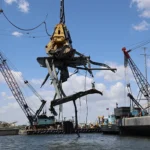A federal appeals court on Friday upheld a judge’s landmark ruling that the Army Corps of Engineers is liable for property owners’ claims, agreeing the shoddy work on a shipping channel caused billions of dollars in damage from Hurricane Katrina’s storm surge.
A three-judge panel from the 5th U.S. Circuit Court of Appeals rejected the federal government’s argument that it is entitled to immunity from lawsuits blaming Katrina’s flood damage on the corps’ operation and maintenance of the Mississippi River-Gulf Outlet, a New Orleans navigation channel.
The federal government had asked the 5th Circuit to reverse a 2009 decision by U.S. District Judge Stanwood Duval, who ruled that flooding in St. Bernard Parish and New Orleans’ Lower 9th Ward was a manmade disaster created by the corps’ negligence.
The 5th Circuit praised Duval for his “impressive” rulings and lauded his “careful attention to the law and even more cautious scrutiny of complex facts.”
Duval awarded a total of nearly $720,000 in damages to five plaintiffs who sued. The corps also has received roughly 500,000 administrative claims that could become fodder for similar suits.
Plaintiffs’ attorney Pierce O’Donnell expressed hope that Friday’s ruling could stimulate settlement talks with the government to resolve the pending claims.
“This is a landmark victory, not just for the people ravaged by Katrina’s flooding but for all Americans,” he said. “We must hold our government accountable when it inflicts avoidable harm on its citizens.”
A Justice Department spokesman didn’t immediately return a phone call seeking comment.
Plaintiffs’ attorney Joe Bruno said he expects the government to ask the full 5th Circuit to review the case. They could also appeal to the U.S. Supreme Court.
“I see no reason for the Supreme Court to take the case,” he said. “This is not a big, controversial interpretation of the law.”
During a hearing last year, O’Donnell told the 5th Circuit judges that the corps knew for decades that the MRGO channel was a “mounting and looming disaster” in the making and yet did nothing to ease the threat.
The MRGO, which extends for 60 miles southeast from New Orleans to the Gulf of Mexico, partially opened in 1963 and was closed about three years after Katrina struck in August 2005. Over the decades, the corps’ dredging of the channel resulted in the loss of thousands of acres of wetlands that helped protect greater New Orleans from hurricane flood waters.
Justice Department lawyers argued that the Flood Control Act of 1928 shields the federal government from liability.
In his 156-page ruling, however, Duval said he was “utterly convinced” that the corps’ failure to shore up the channel “doomed the channel to grow to two to three times its design width” and that “created a more forceful frontal wave attack on the levee” that protected St. Bernard and the Lower 9th Ward.
The 5th Circuit said some of the plaintiffs in the case demonstrated that the corps’ “negligent decisions rested on applications of objective scientific principles and were not susceptible to policy considerations.”
“At points where it could have mattered, the Corps did not identify MRGO’s ability to aggravate the effect of a major hurricane,” 5th Circuit Judge Jerry Smith wrote. “This is not a situation in which the Corps recognized a risk and chose not to mitigate it out of concern for some other public policy (e.g., navigation or commerce); it flatly failed to gauge the risk.”
Was this article valuable?
Here are more articles you may enjoy.

 Average U.S. Vehicle Age Approaching 13 Years, New Report Shows
Average U.S. Vehicle Age Approaching 13 Years, New Report Shows  How the Key Bridge Collapse Continues Reshaping Infrastructure Insurance
How the Key Bridge Collapse Continues Reshaping Infrastructure Insurance  Audi Q6, Three Other Vehicles Earn IIHS 2025 Safety Awards
Audi Q6, Three Other Vehicles Earn IIHS 2025 Safety Awards  US Regulator Takes Initial Steps to Boost Self-Driving Cars
US Regulator Takes Initial Steps to Boost Self-Driving Cars 